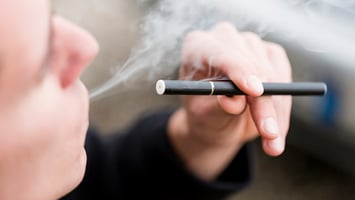Chromatography is a cornerstone of analytical testing for nicotine products. It allows us to quantify active ingredients, track impurities, and ensure batch consistency. But what happens when your...
CORESTA PSPT 2025: Science, Standards and Innovation in Product Safety
Nicotine
Oct 29, 2025 | Published by Paul Hardman
Nicotine, Events
The 2025 CORESTA Product Science and Product Technology (PSPT) Conference brought together researchers and industry experts to discuss the latest advances in product safety, analytical science, and tobacco harm reduction. Across presentations and workshops, the event underscored the importance of collaboration, transparency and continuous improvement in the science underpinning next-generation nicotine products.
Day One Highlights
Following a welcome from Jutta Pani, Mitch Zeller opened the conference with reflections on his time at the FDA and his ongoing support for a science-led approach to tobacco regulation. Now speaking freely in retirement, Zeller reinforced the principles of the FDA’s 2017 comprehensive nicotine strategy, particularly the importance of the risk continuum and evaluating overall population risk, including youth initiation.
A variety of presenters discussed the concept of tobacco harm reduction (THR) and products on the THR continuum. My highlight of these sessions was presented by Steve Roulet. It covered comparative data on tobacco heating product use across Japan, Italy and Germany, demonstrating that in markets such as Japan, smoking rates have declined since introduction. At the same time, Germany’s have increased, illustrating regional differences in adoption and public health impact. Importantly, across all markets, more than 95% of users were current or former smokers, reaffirming that non-smokers rarely initiate use.
Day Two Highlights
Day Two featured multiple parallel sessions. I attended the track focused on heated tobacco products, followed by a symposium on dual use.
After lunch, it was the poster session. My poster, titled: Comparative evaluation of HPLC-UV and GC-FID methods for nicotine quantification: implications for evolving quality control standards, can be found below:
The evening offered the opportunity to relax and meet the conference attendees in a social setting where we enjoyed drinks and great food.
Day Three Highlights
I chose to attend the talks on oral nicotine products, highlighting advancements in analytical methods for nicotine content, dissolution profiles, and the measurement of harmful and potentially harmful constituents (HPHCs).
The final sessions were on modeling, with topics such as tobacco use surveys, the importance of reduced-risk products ‘reach being as important as switch rates, the potential impact of flavour bans, respiratory symptoms in reduced-risk product users, cisplatin resistance, and personalised rehabilitation of patients with lung cancer.
Day Four Highlights
Day four started with the second heated tobacco product session with emission data from heated non-tobacco substrates.
The electronic vapour product session was next, covering the CORESTA working group’s progress, flavour fading and shelf life, heater corrosion with nicotine salts, new emissions measurement techniques, emissions, phthalates, flavouring, and controlling metals testing.
The conference concluded with a session on cigarette filter degradation in marine environments, highlighting the importance of conducting appropriate ecological impact assessments.
Looking Ahead
CORESTA PSPT 2025 showcased a vibrant, forward-thinking scientific community working to advance product safety, transparency and consumer understanding. From analytical validation and toxicological testing to behavioural research, the shared goal was clear: developing robust, evidence-based science to support harm reduction and protect public health.
Broughton’s regulatory consulting and scientific services help you turn insights into action. Get in touch to discuss how we can support your product development and regulatory strategy.



